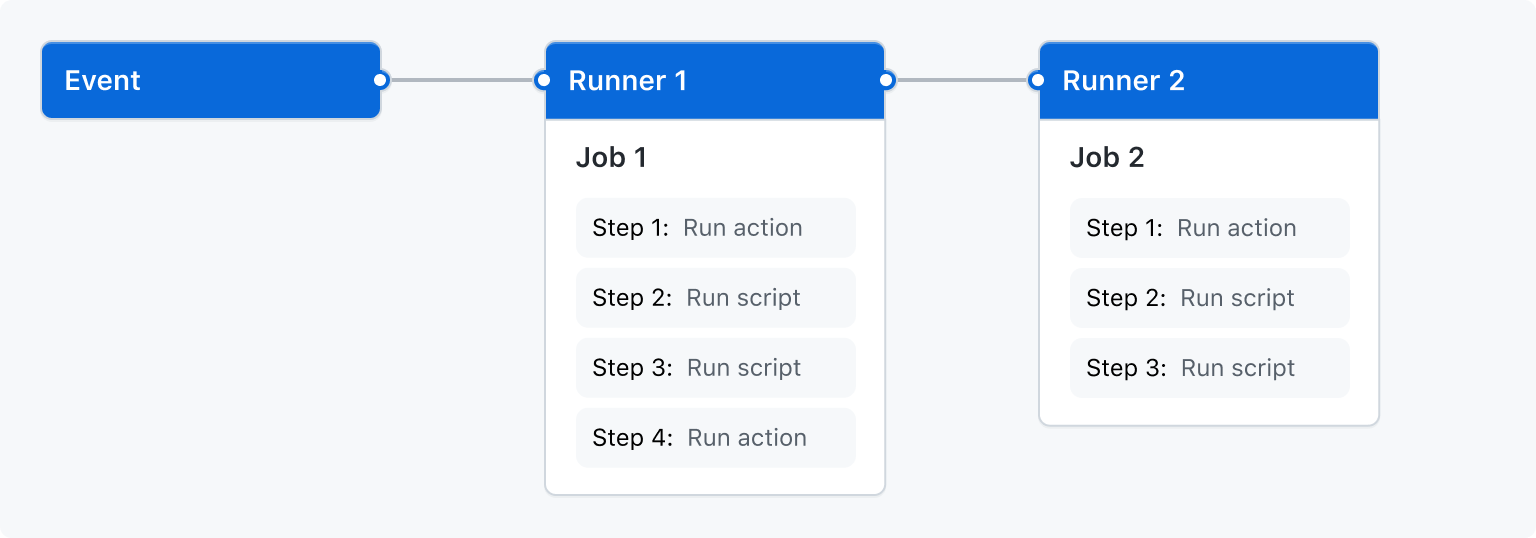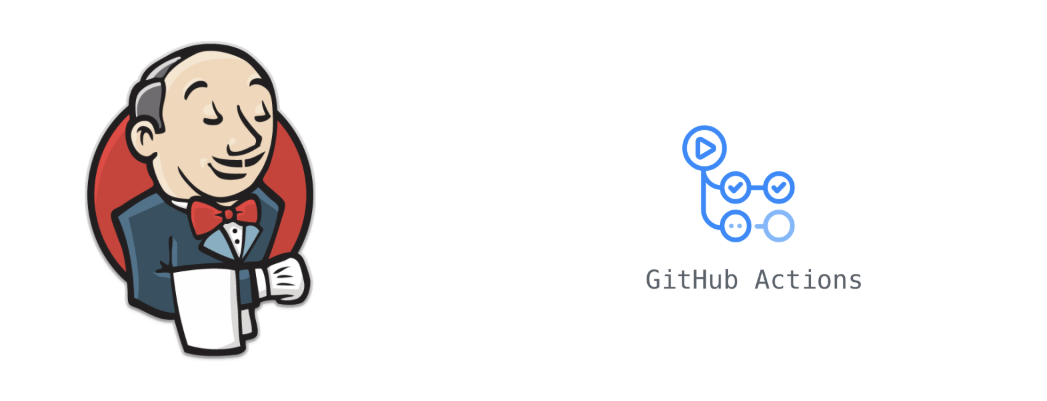GitHub Action: Integrated CI/CD Platform for the Entire Software Development Lifecycle
GitHub Actions is a comprehensive and flexible automation platform within GitHub that allows users to automate their software development workflows directly in their GitHub repositories.

Introduction
GitHub Actions is a comprehensive and flexible automation platform within GitHub that allows users to automate their software development workflows directly in their GitHub repositories. It's particularly known for enhancing continuous integration and deployment (CI/CD) processes. This means whenever there's a new push to a repository or a pull request, GitHub Actions can automatically build, test, and deploy the code, ensuring smooth integration with the existing codebase and consistent, error-free deployment.

Workflows in GitHub Actions are defined in YAML files located in the .github/workflows directory of a repository. These files detail the events that trigger the workflow, the jobs that should be run, and the steps within each job. The versatility of GitHub Actions is evident in its support for various languages and frameworks, and its ability to integrate both custom scripts and third-party actions from the GitHub Marketplace. This allows developers to tailor workflows to their specific project needs.
An important aspect of GitHub Actions is its support for parallel execution and matrix builds. This feature enables the simultaneous running of multiple jobs, significantly speeding up the workflow process, and allows for testing across different environments or language versions at the same time. This parallelism is a key advantage in rapidly evolving development environments.
Additionally, GitHub Actions is tightly integrated with other GitHub features like GitHub Packages and the GitHub Container Registry, streamlining the development pipeline. It also includes robust security features for managing secrets and sensitive data, ensuring these elements are safely handled within the workflows.
Furthermore, GitHub Actions is not limited to just CI/CD. It can be triggered by a variety of GitHub events, making it a versatile tool for automating a wide range of tasks, from issue triaging to software releases. This flexibility and integration with the GitHub ecosystem make GitHub Actions an indispensable tool for modern software development, offering a scalable, cloud-native approach to automating and managing development and operational tasks.
Key Features
The key feature that sets GitHub Actions apart from other CI/CD and automation tools is its deep integration with the GitHub platform. This integration provides a unique and powerful combination of features:
Unified Ecosystem
GitHub Actions operates within the GitHub ecosystem, allowing developers to automate their workflows directly in the same environment where their code resides. This eliminates the need for separate CI/CD tools or external integrations, streamlining the development process.
Community-Driven Marketplace
Unlike many other tools, GitHub Actions benefits from a vast marketplace of pre-built actions created by the GitHub community. This allows developers to quickly implement complex workflows using actions that have already been developed and tested by others, saving time and effort.

Flexibility and Customization
GitHub Actions offers unparalleled customization capabilities. Developers can create workflows that precisely fit their needs, whether it’s a simple CI pipeline or a complex multi-stage deployment process. This level of customization is achieved through the use of YAML configuration files, where workflows can be defined and tailored in great detail.
Native Integration with GitHub Features
Being a native part of GitHub, Actions is designed to work seamlessly with other GitHub features like pull requests, issues, GitHub Packages, and the GitHub Container Registry. This ensures a more cohesive and efficient workflow, where everything from code review to deployment is interconnected.
Extensive Language and Platform Support
GitHub Actions supports a wide range of programming languages and platforms, making it a versatile tool for a diverse set of development environments. This broad support is crucial for teams working with a mix of technologies and frameworks.
Matrix Builds
A distinctive feature of GitHub Actions is its support for matrix builds. This allows developers to run tests across multiple versions of languages and different operating systems simultaneously, significantly reducing the time required for testing.
Hosted Runners and Self-hosted Options
GitHub provides hosted runners for executing workflows, which is a convenient option for teams that do not want to manage their own infrastructure. Additionally, for teams with specific requirements, GitHub Actions allows the use of self-hosted runners, offering greater control over the environment and resources.
Automated Event-Triggered Workflows
GitHub Actions can be triggered by a wide range of GitHub events (like push, pull request, issue creation, etc.), enabling automated workflows in response to almost any activity within a repository.
These features, especially the tight integration with GitHub and the community-driven aspect, make GitHub Actions a unique and powerful tool in the landscape of development and automation tools. It not only simplifies and automates the software development lifecycle but also enhances collaboration and efficiency.
Architecture
The architecture of GitHub Actions is designed to provide flexibility, scalability, and ease of use for automating workflows. It comprises several key components and concepts that work together to enable the automation of CI/CD and other processes directly within GitHub. Here’s an overview of its architecture:
Workflows
At the heart of GitHub Actions are workflows. A workflow is an automated process that you set up in your GitHub repository. It is defined by a YAML file in the repository's .github/workflows directory. Workflows are event-driven, meaning they can be triggered by various GitHub events (like a push, a pull request, a release, etc.), on a schedule, or even manually.
Events
Events are specific activities in a GitHub repository that trigger workflows. These can include direct actions like pushing code or opening a pull request, as well as scheduled events or external events via a repository dispatch.
Jobs
A workflow contains one or more jobs. Jobs are a set of steps that execute on the same runner. By default, jobs run in parallel, but they can be configured to run sequentially if there are dependencies between them.
Steps
Each job in a workflow is made up of one or more steps. These steps can be either run shell commands or actions. Steps in the same job share data with each other, like a workspace for passing along artifacts and a container context.
Actions
Actions are standalone commands that are combined into steps to create a job. They can be written by you or you can use actions published by the GitHub community in the GitHub Marketplace. Actions can be as simple as a single task or complex, encapsulating multi-step processes.
Runners
Runners are servers that have the GitHub Actions runner application installed. When a workflow is triggered, the jobs in the workflow run on the specified runner. GitHub provides hosted runners with different operating systems (Linux, Windows, macOS), or you can host your own runners for more control over the environment and resources used.
Secrets and Environment Variables
Secrets are used to store sensitive information, like tokens or credentials, and are made available to actions or steps in a secure way. Environment variables can be defined at the workflow, job, or step level, allowing you to customize the execution environment dynamically.
Artifacts and Caching
GitHub Actions allows you to upload artifacts produced by one job and download them in another job in the same workflow. It also supports caching dependencies and other directories to speed up workflows.
The architecture of GitHub Actions is built to be both powerful and flexible, enabling developers to automate virtually any aspect of their development and deployment processes within the GitHub ecosystem. The combination of these components provides a comprehensive and integrated approach to CI/CD and workflow automation.
How it works

Workflows in GitHub Actions are automated procedures that you can set up in your GitHub repository to build, test, deploy, or manage your project. They are defined by a YAML file placed in the .github/workflows directory of your repository. This YAML file serves as a recipe that dictates how the workflow should operate.
The YAML file for a GitHub Action workflow begins with a name for the workflow, making it easier to identify and manage multiple workflows within a repository. The core of the workflow configuration lies in defining when the workflow should be triggered (on), what it should do (jobs), and how each job should be carried out (steps).
The on keyword is used to specify the events that trigger the workflow. These events could be GitHub events like push or pull_request on specified branches or tags, or even a schedule defined using cron syntax. For more complex workflows, you can specify multiple events and conditions under which the workflow should be executed.
Under the jobs section, you detail the tasks that the workflow will execute. Each job runs independently and can be configured to run on different types of runners, like Ubuntu, Windows, or macOS. Jobs are made up of steps that execute commands or actions. A step can be a shell command or an action, which is a reusable unit of code.
Actions within steps are one of the powerful features of GitHub Actions, allowing you to leverage community-created actions from the GitHub Marketplace or define your own. These actions can do anything from checking out your repository's code to deploying your application to a cloud provider.
In the YAML file, you can also define env, environment variables that are accessible to the commands and actions in the steps. For sensitive information like tokens or passwords, you use secrets, which are encrypted environment variables that you set up in your GitHub repository settings.
To sum up, the workflow's YAML configuration file in GitHub Actions is a flexible and powerful tool that allows you to automate a wide range of tasks related to building, testing, and deploying your code, all within the GitHub environment. This integration simplifies the development process by keeping your code and its automation in one place.
GitHub Actions vs GitLab CI/CD vs Jenkins

| Feature/Aspect | GitHub Actions | GitLab CI/CD | Jenkins |
|---|---|---|---|
| Integration | Tightly integrated with GitHub. | Deeply integrated with GitLab. | Standalone, requires integration with Git or other SCMs. |
| Configuration | YAML files in the repository. | YAML files in the repository. | Uses Jenkinsfiles, with Groovy-based DSL. |
| Setup and Ease of Use | Simple to set up within GitHub. | Straightforward setup within GitLab. | Requires separate installation and configuration. More complex setup. |
| Customization | High level of customization with actions. | Highly customizable with scripts and templates. | Extremely customizable, with a vast number of plugins. |
| Community and Marketplace | GitHub Marketplace for actions. | GitLab's own integrations and templates. | Extensive plugin ecosystem. |
| Hosted/On-Premise | Primarily hosted, with self-hosting options. | Both GitLab.com (hosted) and self-managed options. | Typically self-hosted, but cloud solutions exist. |
| Parallel Execution | Supports parallel jobs and matrix builds. | Supports parallel and sequential job execution. | Parallel execution with plugins. |
| Language and Platform Support | Broad support for various languages and platforms. | Broad support, similar to GitHub Actions. | Broad support, dependent on plugins and environment. |
| CI/CD Focus | Strong focus on CI/CD and automation within GitHub. | Strong CI/CD capabilities integrated with GitLab's suite of tools. | Primarily a CI tool but can be extended to CD with plugins. |
| Security | Built-in secret storage, token and permissions system. | Comprehensive security features and secret management. | Security reliant on plugins and configuration. |
| Pricing | Free for public repos, paid plans for private repos. | Free tier available, paid plans for advanced features. | Free and open source. Cost associated with self-hosting and maintenance. |
- GitHub Actions: Ideal for teams already using GitHub, offering seamless integration and ease of use within the GitHub ecosystem. It’s great for automation beyond just CI/CD due to its tight integration with GitHub features.
- GitLab CI/CD: A strong choice for teams that use GitLab, as it offers comprehensive CI/CD capabilities deeply integrated with GitLab's entire DevOps platform.
- Jenkins: Known for its flexibility and extensive plugin system, it suits teams needing highly customizable CI/CD pipelines and those who prefer a standalone CI/CD tool. It requires more setup and maintenance but is very powerful in the right hands.
Each of these tools has its strengths and is suited to different organizational needs and setups. The choice often depends on the existing ecosystem the team is using (GitHub, GitLab, or another SCM), the level of customization required, and the preference for hosted versus self-hosted solutions.
Example
We'll set up a simple workflow that triggers on every push to the main branch of a repository. This workflow will consist of two jobs: one to run unit tests and another to build the project. Here's how the YAML configuration file might look:
In this example:
- The workflow is named "8grams Example CI Workflow".
- It triggers on every push to the
mainbranch. - The workflow has two jobs:
testandbuild. - The
testjob checks out the code, sets up Python, installs dependencies, and runs tests using pytest. - The
buildjob waits for thetestjob to complete successfully (needs: test) before proceeding. It then performs a series of steps that would represent building your project.
This configuration file demonstrates the basic structure of a GitHub Actions workflow and how you can define multiple jobs with dependencies on each other. You can customize and expand this template to suit the specific needs of your project.


